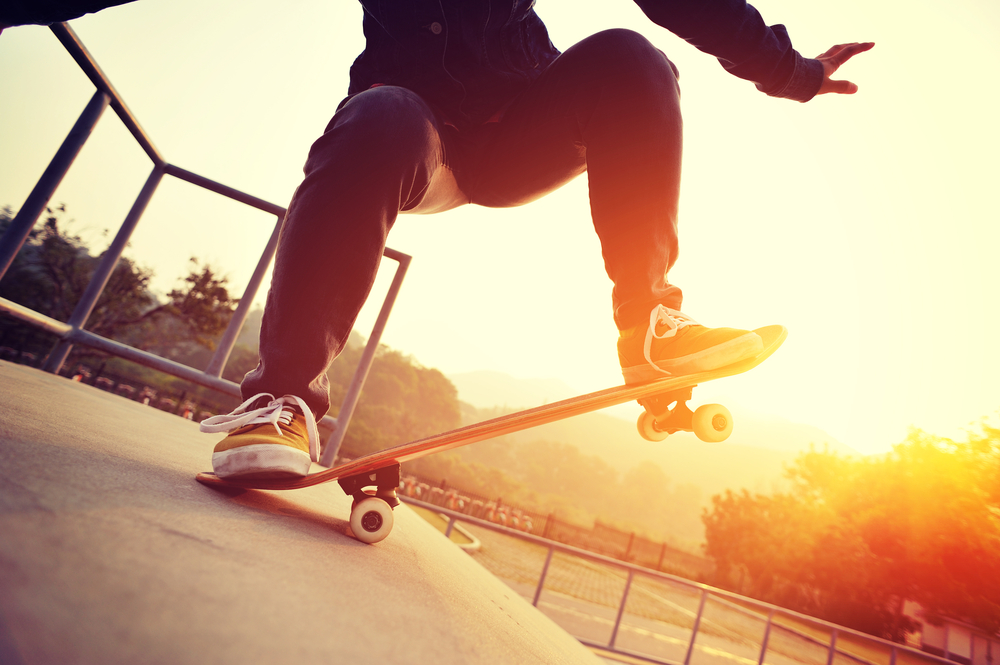Kids Skateboards: the Essential Safety Advice for Parents
Skateboarding is a fun, challenging, and attractive hobby among young children, teenagers, and adults alike. Some even choose to become professional stunt performers or competitive skateboarders. Well, whatever your kids end up doing later on in life, if they are thinking about taking up this enticing sports activity, you as their guardian will have to know how to keep them safe without being a helicopter parent.

Some general safety tips
As established by the AAP (American Academy of Pediatrics), any child below the age of five should not be allowed to go skateboarding. At this age range, a child’s sense of balance and their overall abilities of situational perception and proper judgement have still not sufficiently developed. Read this to learn more about how a child’s motor skills develop as they grow older.
They would not be able to even recognize that a situation is dangerous and calls for a quick reaction (such as falling in a safe way). As such, they are at an extremely high risk of experiencing serious injuries while riding a kiteboard. Additionally, children between the ages of six and ten years old can be allowed to skateboard, but only under the careful supervision of an adult.
Select safe skateboarding equipment
This is obviously one of the most crucial steps you will have to take when preparing your little ones for their skateboarding adventures. The equipment for this particular activity is just as wildly varied as that for any other borderline extreme sport, but we will cover just the essential basics here. This should give you an idea of what to look for, but still leave you with plenty of flexibility when you go to make the actual purchase. So, without further ado, this is what you need:

To begin with, a proper skateboard. It is actually a lot more complicated than just getting a plank with wheels that has a design which your kid will like. There are many different styles of skateboarding, and many different actions you can execute while riding one – different speeds, different tricks, slalom riding, freestyle riding, to mention just a few.
You have to make sure that your child has the right kind of vehicle for the sort of thing they want to learn how to do. A simple online search for the top 5 skateboards for kids can give you some insight into what you can expect in this sense.
In addition to the board, you will need to procure some protective wear for your young one. They will need pads for their elbows and knees, wrist guards (to lessen the strain on their wrists when they fall, and thus reduce the risk of breaking them), some kind of eyewear that would not shatter, and shoes with slip-proof soles and closed toes. Top it all off with a good helmet.
The helmet is the single most essential piece of gear you need. Even if you can only afford one thing right now, go for the helmet. It can literally save a life (broken neck, anyone? We didn’t think so!) So be careful when shopping around for one. If you can, buy a helmet that was made specifically for skateboarding, it will safeguard the head and neck form the most common skating injuries. Failing that, get one with a multi=sport design – versatility in protection is especially important for beginners.
Check if the helmet is a good fit

A good helmet will be a wasted investment, and even a safety risk, if it does not first your kid’s head properly. So make sure to do a thorough check of it before you make the final purchase. The helmet is supposed to be checked against the eyes, ears and mouth.
For the eye test, have the child look up and check how much they see (or do not). The bottom rim of the helmet should be in their field of vision, about the width of a finger or two above the line of the eyebrows.
For the ears test, look at the helmet straps. They should be meeting underneath the ear to form a V shape when you buckle them.
For the mouth test, have your kid open their mouth as wide as it will go. They should feel their head being “hugged” by the helmet. If they do not, it is likely not adjusted well. In that case, fix the straps to be tighter, and double check to confirm that the buckle is set nice and flat against the skin.
Teach your children how to ride their boards safely

No matter how much protective gear you deck them in, your child will inevitably fall and tumble on their rides. This is just how skateboarding works. So, to minimize damage, teach your children how to properly fall. Here are some tips:
Teach them to crouch when they eel they are falling. This will preemptively bring them closer to the ground, reducing the impact. They also have to unlearnt he instinct of trying to absorb the force of a fall with their hands and arms. That could badly scrape them at best, and shatter their wrists at worst.
Instead, they should aim to fall on their softer, fleshier, plumper parts and immediately roll along with the fall. To achieve this, they have to relax their body while falling. Tensing up and going all board-stiff will only result in worse injury. Try practicing safe falling on a soft surface, like a fluffy carpet at home, or on a grassy patch if you are doing it outside.
Select safe locations for your kids to go skateboarding
Obviously, the best choice would be a licensed skate park. Keep your kids in the beginners’ area and make sure they follow all the rules to a T. Outside the parks, keep them on a smooth and traffic-free surface, and never let them wear headphones while riding. Crowds and wet weather are your largest problem, so make sure to avoid both.












